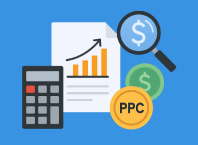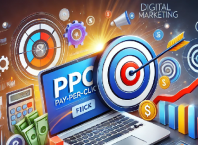A well-designed website easily attracts thousands (if not millions) of visitors, letting users find whatever they’re looking for.
But do you know that your site design can also impact your SEO success? Your design influences several factors in your SEO including content display, loading speed, rank on search engines, and so much more.
Having a great site design makes it convenient and easy for users and search engines to navigate your website.
In this post, we’ll talk about the seven ways of how web design can significantly affect your SEO efforts.
Let’s dive in.
Contents
1. Page Loading Time
Your page loading speed is a crucial aspect that search engines consider to help users find relevant information in the shortest amount of time.
According to Kissmetrics, 47 percent of users expect a site to load within 2 seconds. Otherwise, 40 percent will leave it takes more than 3 seconds.
Chances are, users often don’t have the patience for slow-loading sites and will move on to your competitors. They expect most web pages and websites to load quickly no matter what device they’re using.
Several factors can significantly affect your site speed ‒ large images, unoptimized plug-ins and apps, irrelevant widgets, multiple ads, and so on. Resolving these issues will make your site load fast and boost your SEO strategies.
2. Structured URL
Some websites overlook the importance of having an SEO-friendly URL. They’re an essential detail that is often missed by your fiercest competitors.
Here are some tips on how you can better structure your URLs for SEO:
- Improve your rankings by using shorter URLs.
- Minimize the number of keywords used in your URLs,
- Keep your URLs simple, and can be easily read by the average user.
- Utilize subfolders and not subdomains.
- Utilize descriptive names for your URLs instead of more dynamic ones.
- Use page names that are search friendly to boost your web design SEO.
The moment visitors step into your site, they will see the design immediately. Then, they’ll quickly bounce from your site if it’s overly complicated.
That’s precisely why the overall appearance and experience of your website is essential.
You need to create a site design that’s both convenient and easy to use.
Having an excellent navigation design has a continuous flow of web pages. As a result, it’s easy for users to stay on your site and find out whatever they’re looking for.
Navigation is essential to both search engines and users. Without it, your website wouldn’t be considered as search engine friendly, which can result on poor search engine rankings.
4. Non-Responsive Design
Having a responsive design means that you’re giving users an optimal experience in viewing your website, no matter what device they’re using.
Meaning, your content ‒ images, texts, and videos, have to adjust optimally to any desktop, tablet, or smartphone.
Usually, it saves the user the inconvenience of zooming in or scrolling horizontally, to search for the content they’re looking for.
For the best user experience, test out every page, image, and so on. See if it renders beautifully on whatever screen size or device.
Another aspect that you need to consider is speed. Understand what your user wants from your page, and focus on loading that content first.
Moreover, make your entire texts and content readable. Avoid using small fonts that users can barely read.
5. Pop-up Ads
Pop-ups may have proven itself to be effective and excellent in lead generation, but do you know that they can also hurt your SEO?
Intrusive pop-ups may have a significant effect on the overall user experience. For instance, if you launch an entry pop-up before the visitor even has the chance to access any of your content, then it can have a damaging effect on your SEO.
6. Website’s Security
Not securing your site with an SSL certificate is usually a red flag for SEO and your site visitors.
Have you ever tried accessing a site that isn’t https yet?
Well, notice how Google warned you before accessing? Or did you see in the URL bar that your website is labeled as unsecured?
A majority of web hosting companies have a free version of the SSL certificate. Therefore, it helps that you at least have one installed on your site.
7. Mobile Friendliness
If your site isn’t mobile optimized, it wouldn’t be able to rank well. Mobile optimization significantly affects your tablet and desktop search rankings, too.
Therefore, it’s essential that you:
- Keep your site mobile optimized.
- Ensure that you’re providing an excellent user experience on smartphones and tablets.
- See to it that your site’s loading time is under 2 seconds on mobile.
- Your site also needs Accelerated Web Pages or AMP. It is an open source framework that allows you to deliver content faster. As a result, it makes your web pages load more quickly, boost usability, improves user engagement, and your mobile rankings.
Over to You
Web design has a significant impact on your SEO. So, it’s important that you learn from these points and apply them to your site design. Moreover, working with an expert in web design can help you achieve the results you want in the long run.














I think that speed and mobile friendliness are the biggest factors. But can anyone tell what has the biggest effect on the bounce rate? Is web design also a major factor here or should I worry about other stuff?
Hello Luke,
First of all thank you for reading our post.
Web design and your website layout is very important to get success in business and seo.
So you should give importance of web design as well other factors.